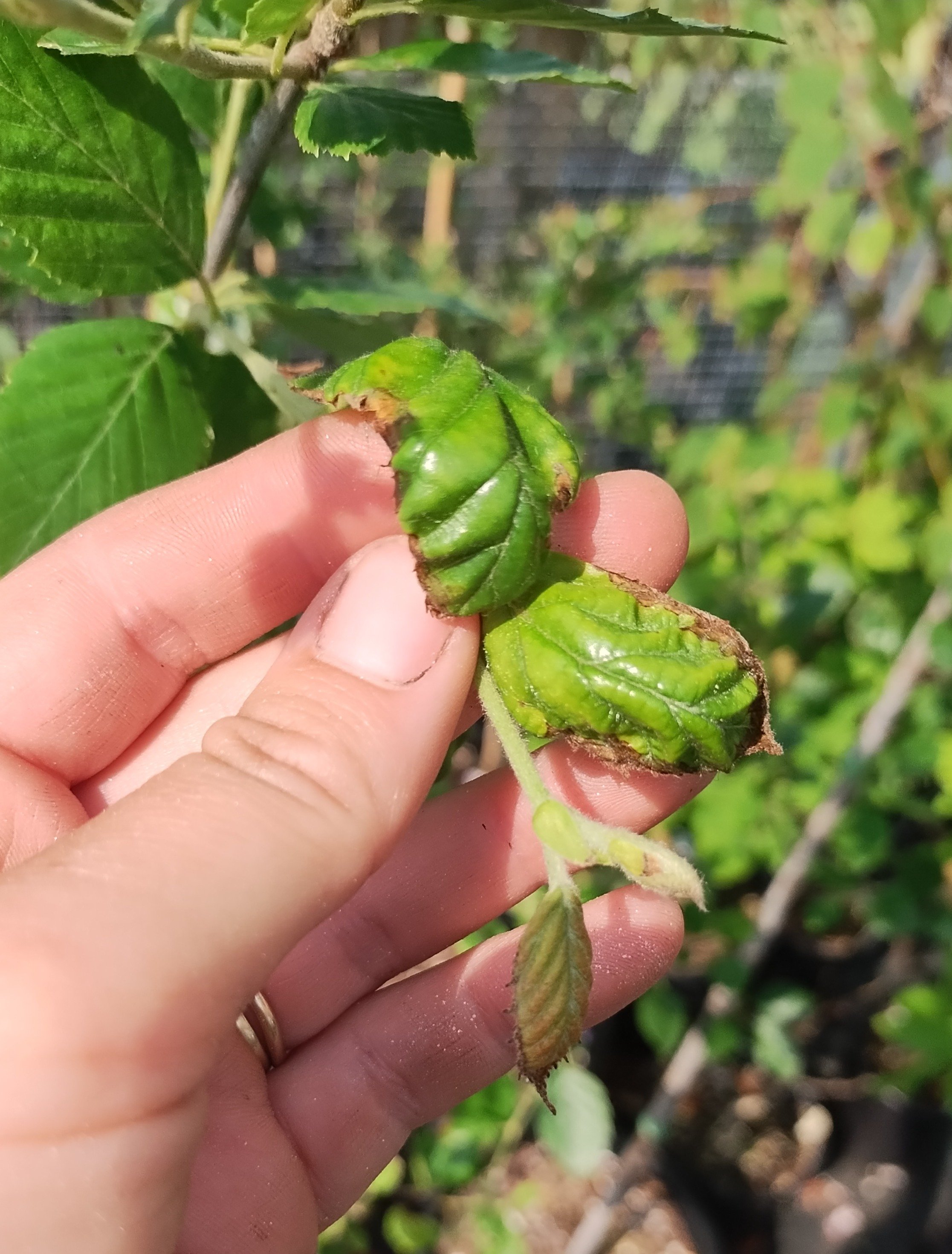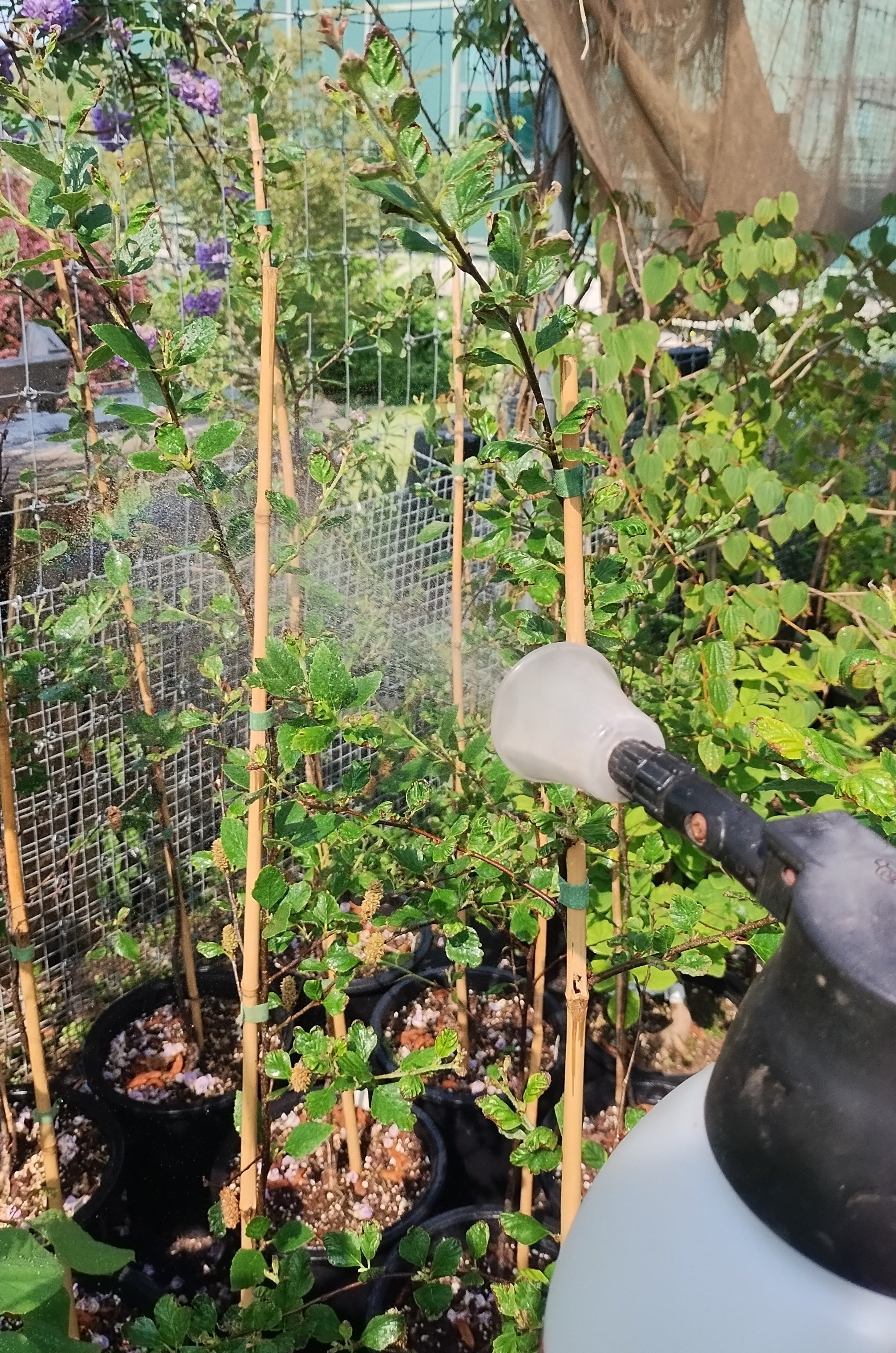Reading the Signs — Treating Nickel Deficiency in River Birches





Working in horticulture is not just knowing how to take care of plants by giving them the right amounts of sunshine, water, and feed, but understanding what the plant is telling you about how much of each of those things it needs. If you know how to read the signs, the growth of a plant, the color of its leaves, and the manner in which those things change, it is almost like cross-Kingdom communication. With leaves essentially being the tree’s external organs, symptoms are specific and visible if you know what to look for, from the most basic of needs to the specifics of micronutrient deficiencies.
Suspected by our Living Collections Manager Joe Verstandig, the relatively unusual deficiency of the micronutrient Nickel was diagnosed in our Morton Park river birch (Betula nigra) grafts from 2022. The distinct indicator of this issue comes in the way that young leaves emerge, becoming brown around the edges, and developing to be smaller and curved in on themselves in such a way that they are said to be ‘mouse-eared’. By looking at potted river birches at other nurseries, it seems to be a fairly common problem, though one that is likely solved by getting the trees in the ground. Each species has its own needs, and growing in a confined space can cause a buildup or lack of certain vital nutrients needed for healthy growth, as is the case here.
Urea is an organic compound that is created by a plant to move nitrogen through its system to be broken down and used for growth, known as nitrogen metabolization. Nickel has been found to be a functional part of several enzymes vital to the breaking down of urea. A tree, such as our river birches, that is deficient in nickel, can have a difficult time removing excess urea once it has done its job, resulting in an imbalanced system and a buildup of acids that can disrupt the tree’s normal growth and development. Hence the smaller, misshapen leaves seen on our birches. The 2024 grafts have shown no symptoms of this problem and their leaves are much closer to the healthy size and shape of a river birch than the larger and more established 2022 grafts that exhibit the nickel deficiency.
Because the levels needed for a healthy plant system are so small, nickel has become the most recently recognized essential plant nutrient. The newness and minimal quantities needed required doing some math, as most applications mentioned were measured in grams per acre. We have 12 small trees to treat. Nickel sulfate is the product used, and the math resulted in using three Nerds Candy-sized granules of the amendment, dissolved in a liter of water. This solvent was then misted onto the trees with a small hand-held pump sprayer as a foliar application for quick and effective absorption of the mineral. One month later, and the majority of new growth on the birches exhibits fully formed, healthy leaves, as opposed to past years where a second flush resulted in more of the same symptoms. A success!
As is often the case, growing plants in pots brings an appreciation for the complexities and variabilities that the soil beneath our feet provides for its vegetative hosts, and how imperfect our replications in confinement can be. We can do our best to raise the trees by understanding their native habitat and trying to replicate that at the Heritage Tree Center, but it is not always enough. Trees can be particular and we may not have all the research and information needed to truly make them happy out of the ground. By understanding and reacting to what the trees are telling us, their overall health increases along with the success of our mission. We now have twelve more happy trees and another tool in our belt for the future.
By Morgan Palmer — Plant Production Manager
July 2024
